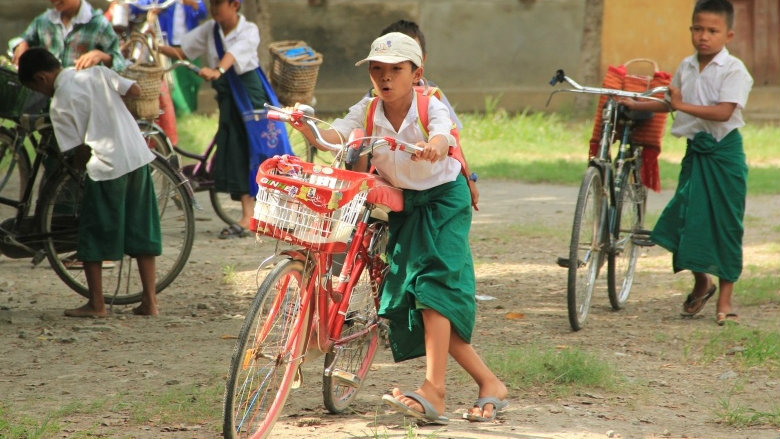Key Findings
Myanmar’s budget policies have undergone fundamental shifts since 2011 to accelerate delivery of essential public services.
- Economic recovery, one-off measures, and reforms to expand the revenue base have improved general government revenue from 6% to 11% of GDP between 2009 and 2014
- While public debt has declined from 77% of GDP in 2007/2008 to 47% in 2013/2014, its debt portfolio of non-concessional external loans and domestic short-term financing instruments remains vulnerable
- Fiscal risks that warrant closer attention and more active management include the decentralization of debt management; the impact of commodity price volatility on government revenue; and the fiscal oversight of State Economic Enterprises (SEEs)
- There were big changes in budget spending between 2009 and 2015 mainly in public services (falling from 45% to 11%), social services (increasing from 10% to 33%), defense (increasing from 21% to 32%), and capital (falling from 63% to 38%)
Prior to 2012, decades of government underspending led to slips in education and health outcomes.
- Low school enrolment and completion rate: one third of 1.2 million students enrolled in grade 1 made it to grade 11
- 9% of grade 3 classes in Yangon cannot read a single word
- Net primary enrolment rate as low as 69% in poorer areas compared to 85% average nationally
- Government spending on public health was only $1.6 per capita in 2012
- Out-of-pocket payments by households made up 80% of total health spending
Several policy reforms since 2012/2013 helped improve education and health outcomes.
- Education reforms are starting to show results. Spending has quadrupled with the elimination of primary and secondary education school fees, compulsory primary education, hiring of 79,000 more teachers, expansion of the stipend program for poor students, and block grants to schools
- Health policies have improved access to and affordability of healthcare services. More medical personnel have been hired. Free drugs and selected healthcare services are available for children, pregnant mothers and patients needing emergency support
Myanmar is transitioning from a centralized to a decentralized system of government based on the 2008 Constitution.
- Initial steps have been taken to establish legislative and executive bodies at State and Region levels
- Tensions between newly established sub-national institutions and traditional arrangements of central control could lead to confusion over management and accountability of public services
- Clarifying lines of authority, improving accountability for service delivery, adopting a policy on expenditure assignments can strengthen the decentralized system
